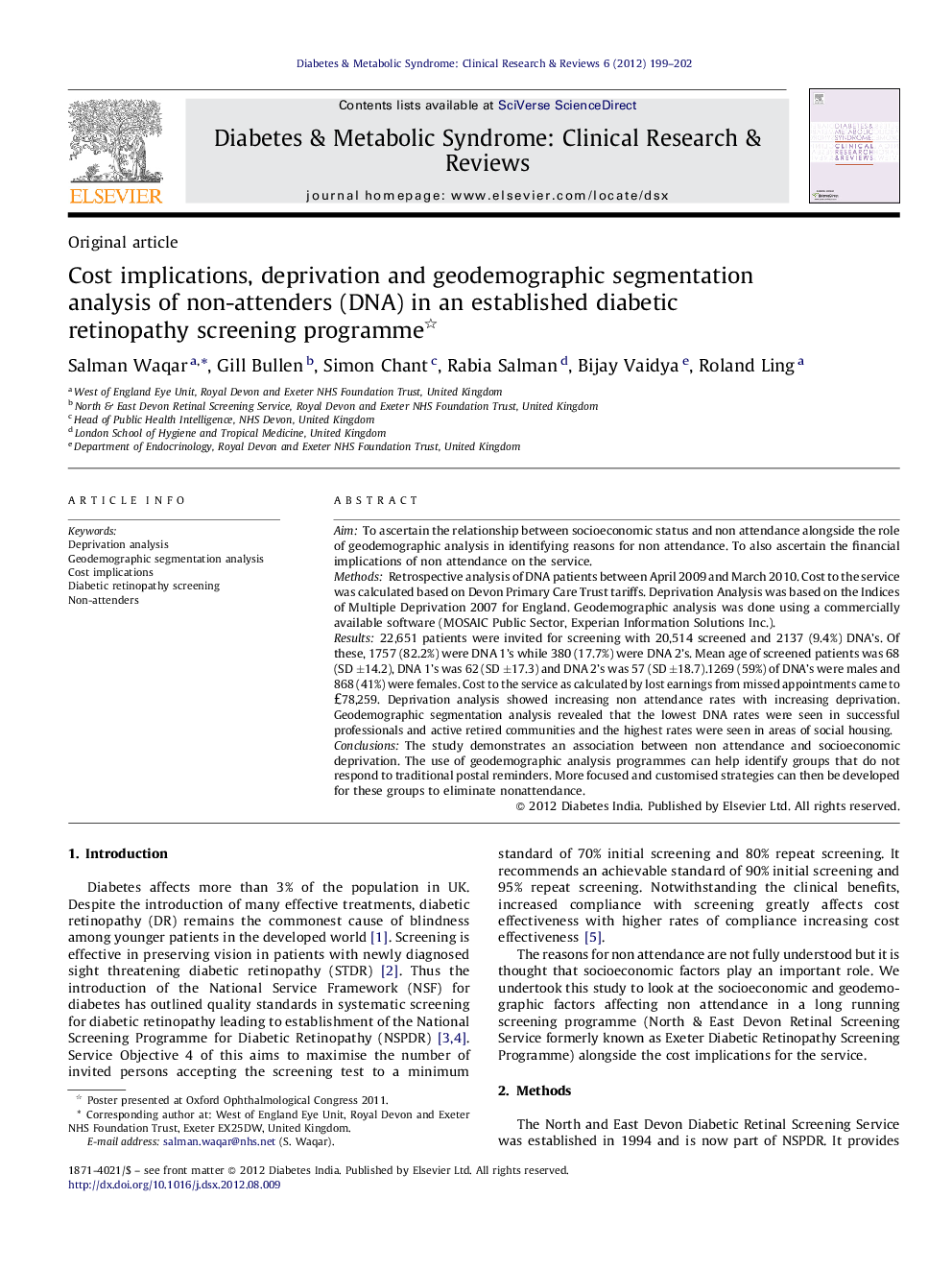| Article ID | Journal | Published Year | Pages | File Type |
|---|---|---|---|---|
| 2910282 | Diabetes & Metabolic Syndrome: Clinical Research & Reviews | 2012 | 4 Pages |
AimTo ascertain the relationship between socioeconomic status and non attendance alongside the role of geodemographic analysis in identifying reasons for non attendance. To also ascertain the financial implications of non attendance on the service.MethodsRetrospective analysis of DNA patients between April 2009 and March 2010. Cost to the service was calculated based on Devon Primary Care Trust tariffs. Deprivation Analysis was based on the Indices of Multiple Deprivation 2007 for England. Geodemographic analysis was done using a commercially available software (MOSAIC Public Sector, Experian Information Solutions Inc.).Results22,651 patients were invited for screening with 20,514 screened and 2137 (9.4%) DNA's. Of these, 1757 (82.2%) were DNA 1's while 380 (17.7%) were DNA 2's. Mean age of screened patients was 68 (SD ±14.2), DNA 1's was 62 (SD ±17.3) and DNA 2's was 57 (SD ±18.7).1269 (59%) of DNA's were males and 868 (41%) were females. Cost to the service as calculated by lost earnings from missed appointments came to £78,259. Deprivation analysis showed increasing non attendance rates with increasing deprivation. Geodemographic segmentation analysis revealed that the lowest DNA rates were seen in successful professionals and active retired communities and the highest rates were seen in areas of social housing.ConclusionsThe study demonstrates an association between non attendance and socioeconomic deprivation. The use of geodemographic analysis programmes can help identify groups that do not respond to traditional postal reminders. More focused and customised strategies can then be developed for these groups to eliminate nonattendance.
